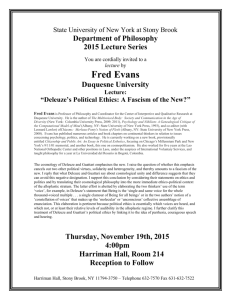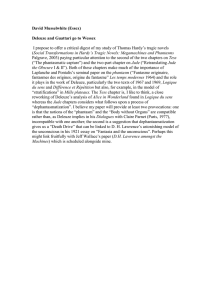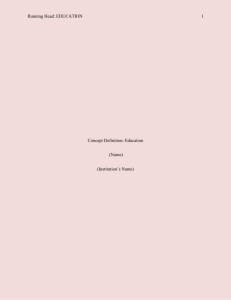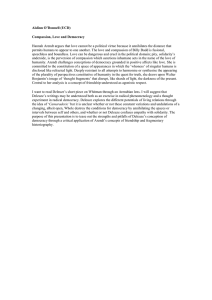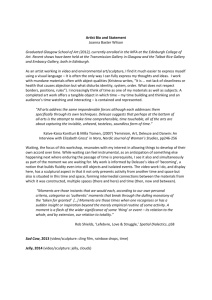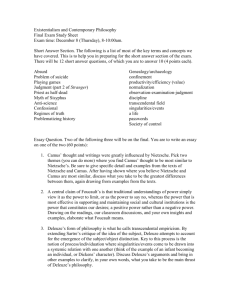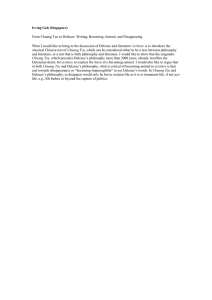Relative Ways: Deleuze, Leibniz and the art of memory Abstract
advertisement
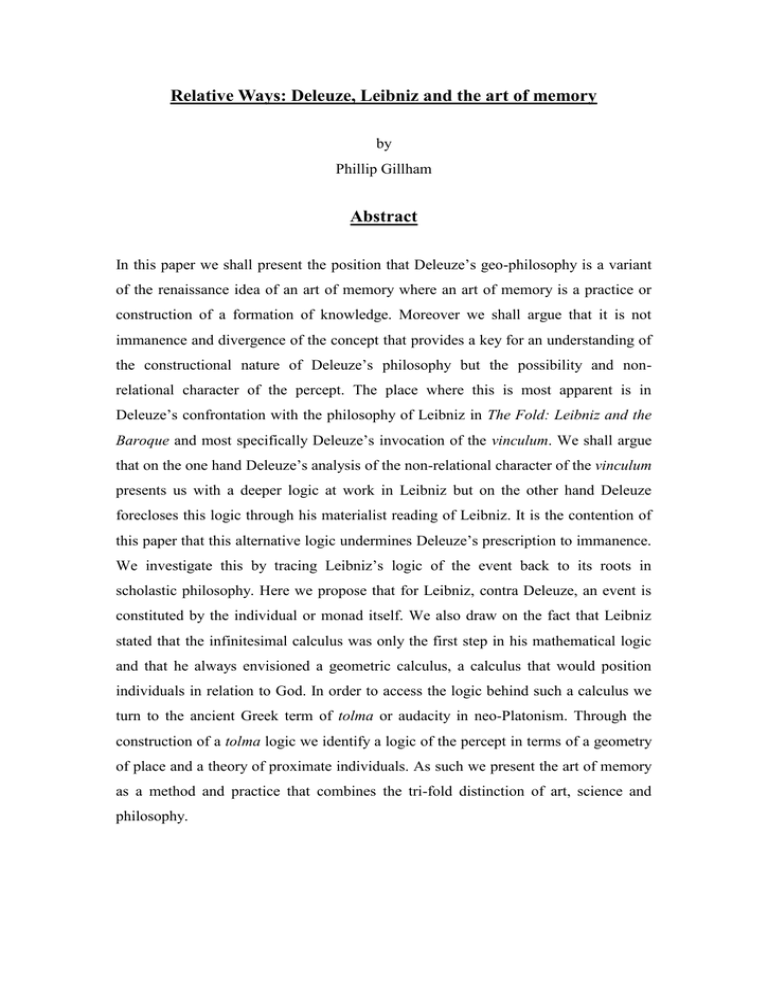
Relative Ways: Deleuze, Leibniz and the art of memory by Phillip Gillham Abstract In this paper we shall present the position that Deleuze’s geo-philosophy is a variant of the renaissance idea of an art of memory where an art of memory is a practice or construction of a formation of knowledge. Moreover we shall argue that it is not immanence and divergence of the concept that provides a key for an understanding of the constructional nature of Deleuze’s philosophy but the possibility and nonrelational character of the percept. The place where this is most apparent is in Deleuze’s confrontation with the philosophy of Leibniz in The Fold: Leibniz and the Baroque and most specifically Deleuze’s invocation of the vinculum. We shall argue that on the one hand Deleuze’s analysis of the non-relational character of the vinculum presents us with a deeper logic at work in Leibniz but on the other hand Deleuze forecloses this logic through his materialist reading of Leibniz. It is the contention of this paper that this alternative logic undermines Deleuze’s prescription to immanence. We investigate this by tracing Leibniz’s logic of the event back to its roots in scholastic philosophy. Here we propose that for Leibniz, contra Deleuze, an event is constituted by the individual or monad itself. We also draw on the fact that Leibniz stated that the infinitesimal calculus was only the first step in his mathematical logic and that he always envisioned a geometric calculus, a calculus that would position individuals in relation to God. In order to access the logic behind such a calculus we turn to the ancient Greek term of tolma or audacity in neo-Platonism. Through the construction of a tolma logic we identify a logic of the percept in terms of a geometry of place and a theory of proximate individuals. As such we present the art of memory as a method and practice that combines the tri-fold distinction of art, science and philosophy.
